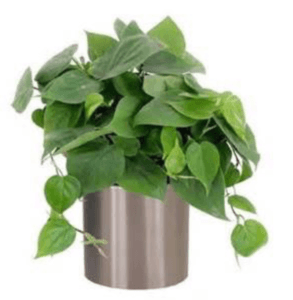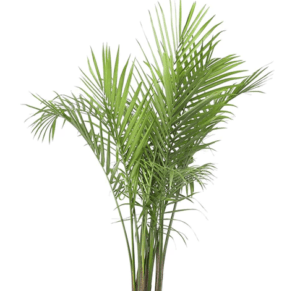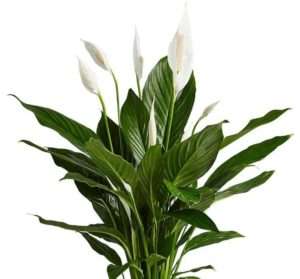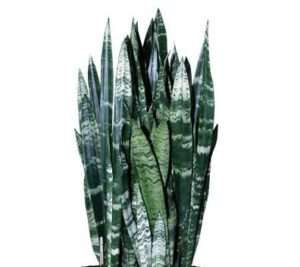The Best Indoor Plants To Clear The Air In The Office
The average American spends over 90 percent of their time inside, according to a recent EPA (Environmental Protection Agency) report. This means we’re breathing in more indoor air than ever, which can contain two to five times higher rates of pollutants. In our hermetically-sealed office, plants are an easy and effective way to improve indoor quality. Indoor plants can effectively boost oxygen levels and reducing toxins in the air. To add some healthy greenery to your workspace, try these top four varieties for cleaning the air.
Philodendrons:
 Known for its lush foliage available in a variety of shapes and sizes, philodendrons thrive indoors, requiring limited light and watering. Their broad, bright green leaves make them particularly effective at absorbing common indoor pollutants such as volatile organic compound (VOCs). Studies suggest philodendrons effectively removes xylene in the air, commonly found in paints, solvents and adhesives. CARE TIPS: This plant thrives best in indirect light and only requires watering when top soil becomes dry. The broad leaves, however, prove prone to collect dust, so leaves need to be wiped regularly to boost its air-clarifying properties.
Known for its lush foliage available in a variety of shapes and sizes, philodendrons thrive indoors, requiring limited light and watering. Their broad, bright green leaves make them particularly effective at absorbing common indoor pollutants such as volatile organic compound (VOCs). Studies suggest philodendrons effectively removes xylene in the air, commonly found in paints, solvents and adhesives. CARE TIPS: This plant thrives best in indirect light and only requires watering when top soil becomes dry. The broad leaves, however, prove prone to collect dust, so leaves need to be wiped regularly to boost its air-clarifying properties.
Bamboo Palm:
 Able to grow up to 6 feet tall, the bamboo palm proves ideal for soaking up toxins. According to a NASA study, its long dark leaves were effective at removing chemicals such as formaldehyde, benzene and carbon monoxide. But this bamboo variety is particularly useful for infusing moisture into dry, air-conditioned spaces, which helps balance humidity levels for asthma and allergy sufferers. CARE TIPS: Water enough to keep the soil moist, but never overwater. Also be sure to monitor its drainage, immediately removing any excess water.
Able to grow up to 6 feet tall, the bamboo palm proves ideal for soaking up toxins. According to a NASA study, its long dark leaves were effective at removing chemicals such as formaldehyde, benzene and carbon monoxide. But this bamboo variety is particularly useful for infusing moisture into dry, air-conditioned spaces, which helps balance humidity levels for asthma and allergy sufferers. CARE TIPS: Water enough to keep the soil moist, but never overwater. Also be sure to monitor its drainage, immediately removing any excess water.
Peace Lily:
 Perhaps nothing is more soothing than blooming flowers, but having flowers indoors can prove tricky for allergy and asthma sufferers. Luckily, the perennial peace lily ticks all the right boxes, regularly producing elegant white blooms that have a very low pollen count. And their broad, glossy leaves are perfect for absorbing toxins. They also make ideal indoor plants, functioning well in indirect sunlight. CARE TIPS: Gently wipe their thick leaves regularly to prevent dust, and watch for signs of drooping – a sure indication you need to water more.
Perhaps nothing is more soothing than blooming flowers, but having flowers indoors can prove tricky for allergy and asthma sufferers. Luckily, the perennial peace lily ticks all the right boxes, regularly producing elegant white blooms that have a very low pollen count. And their broad, glossy leaves are perfect for absorbing toxins. They also make ideal indoor plants, functioning well in indirect sunlight. CARE TIPS: Gently wipe their thick leaves regularly to prevent dust, and watch for signs of drooping – a sure indication you need to water more.
Snake Plant:
 Naturally adapted to drought conditions, the tropical snake plant is a popular indoor option due to its near indestructibility. They thrive on infrequent watering and a variety of light conditions. And their long, striated leaves are efficient oxygen producers and air purifiers. Studies show the thick leaves can absorb 107 known air pollutants. This includes common toxins such as benzene, formaldehyde, trichloroethylene and toluene. CARE TIPS: Because the snake plant shines in dry conditions, avoid overwatering, and make sure the vessels have proper drainage.
Naturally adapted to drought conditions, the tropical snake plant is a popular indoor option due to its near indestructibility. They thrive on infrequent watering and a variety of light conditions. And their long, striated leaves are efficient oxygen producers and air purifiers. Studies show the thick leaves can absorb 107 known air pollutants. This includes common toxins such as benzene, formaldehyde, trichloroethylene and toluene. CARE TIPS: Because the snake plant shines in dry conditions, avoid overwatering, and make sure the vessels have proper drainage.




